“A Really Big Win”: New Trial Data Highlights Ties Between V6 Nutrient Uptake and Crop Yield
For many years, trial data has shown that MicroEssentials significantly outperforms alternative commodity fertilizer blends in terms of phosphorus (P) uptake at the V3 growth stage. Now, newly published trial results reveal that the difference in P uptake between MicroEssentials and commodity fertilizer blends is even greater at the V6 stage, demonstrating the impact Fusion® technology has on early-season growth and nutrient uptake. And because corn’s maximum yield potential is determined as early as V6, increased uptake early in the season really matters for a grower’s bottom line.
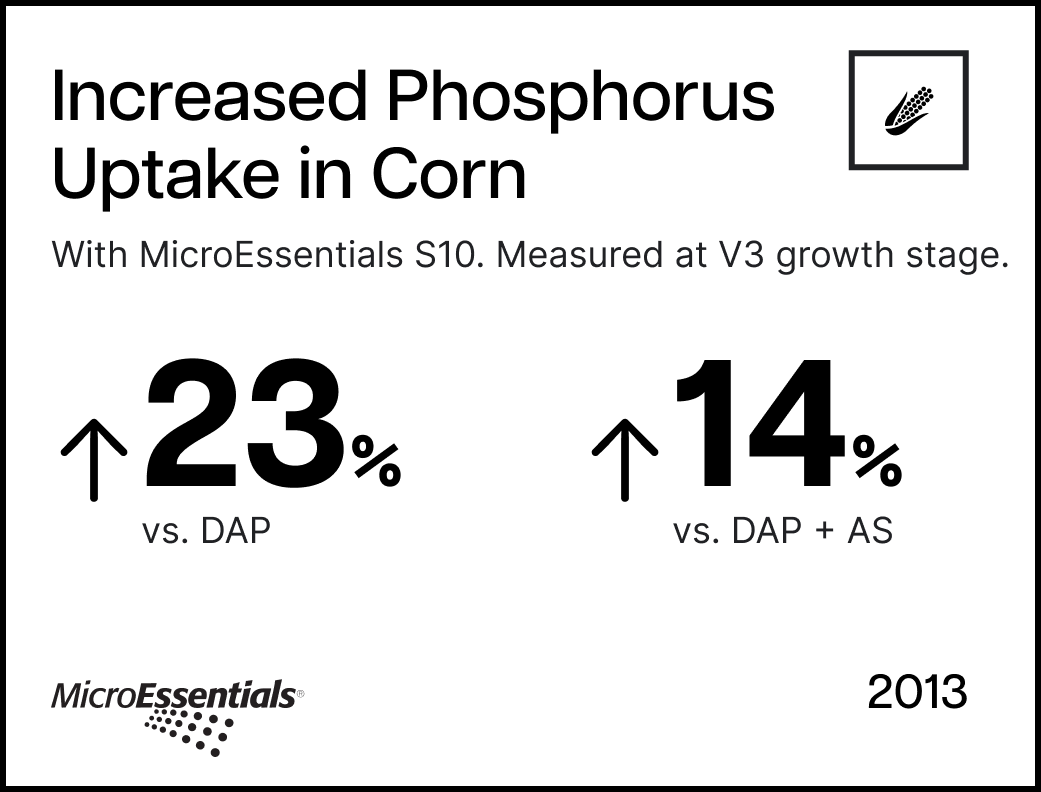
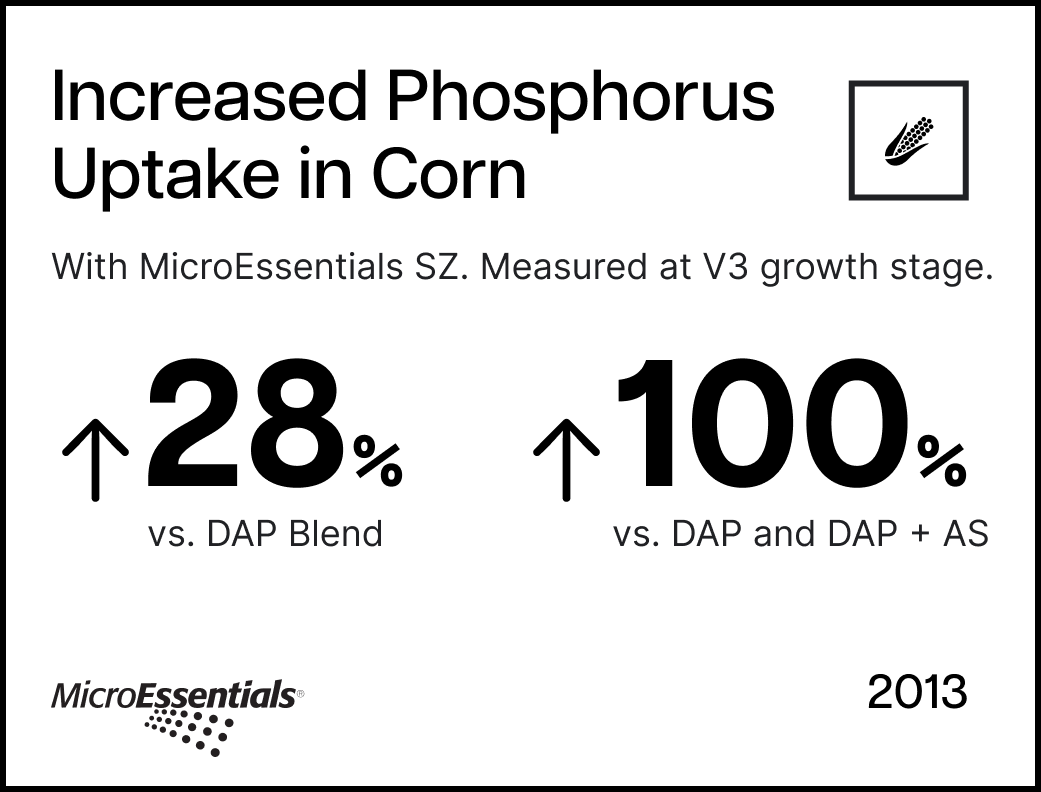
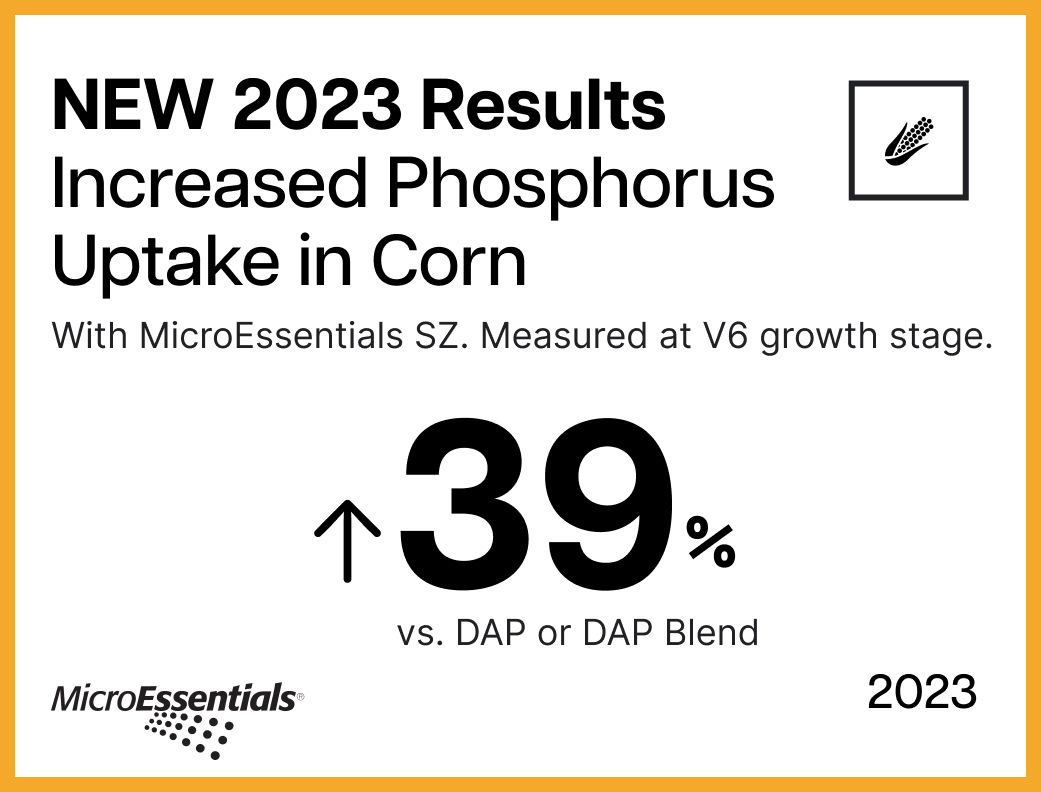

V6 Uptake and Maximum Yield
“This is important,” says Taylor Purucker, a Crop Nutrition Lead with The Mosaic Company, “because we see a greater magnitude of increase as we progress throughout the season. And that’s especially critical because V6-V8 is where maximum corn yield potential is determined. This, in addition to two forms of sulfur and uniform nutrient distribution, is what truly leads to the yield benefits that we see with MicroEssentials versus MAP/DAP blends.”
Initially, early third-party trial data demonstrated that MicroEssentials S10 and SZ outperformed DAP blends by 14% and 28%, respectively, at the V3 growth stage. More recent studies, published spring 2023, have shed important light on this continuum of growth. So, whereas SZ at V3 saw a +28% increase in P uptake versus DAP blends, at V6 it was measured to produce a +39% increase, widening the gap between MicroEssentials and commodity fertilizer blends. Even against MAP, SZ produced a 20% increase in P uptake, and a 9% increase over a MAP blend specifically balanced to match the S and Zn rates of MicroEssentials SZ.
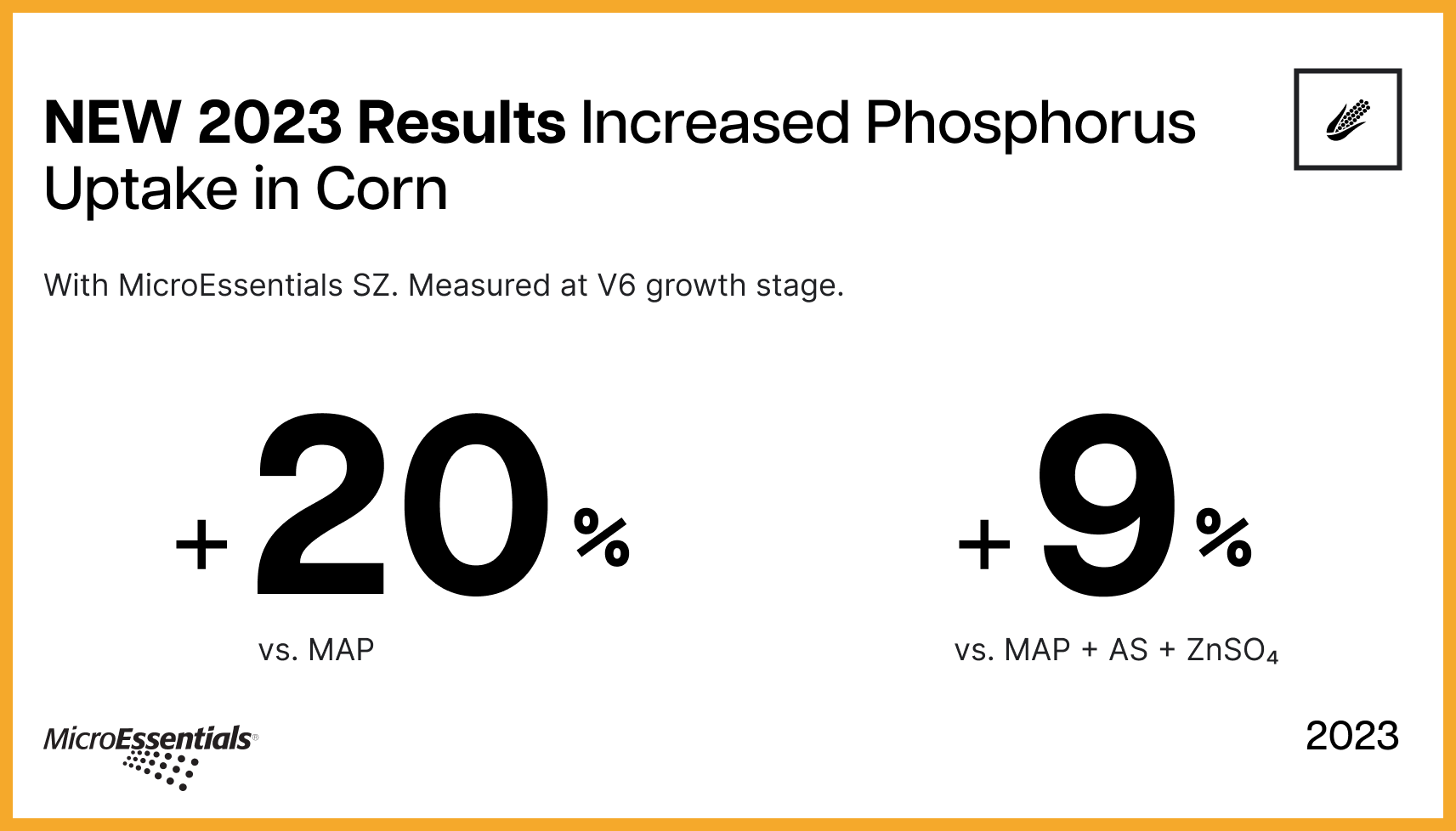
“23 percent is a big win”
As Purucker goes on to explain, this difference in performance is especially significant given that phosphorus can be so difficult for plants to reach. “When you think about it, phosphorus has a relatively low use efficiency, because P is immobile and easily tied up in the soil,” Purucker adds. “Really, the majority of phosphorus doesn’t make it into the plant. So, a 23% increase in P uptake is a really big win.”
It’s this P uptake that leads to increases in yields, and explains why trial data has continually produced differences in yield of 3.2-8.8 bu/ac in SZ over DAP and of 4.9-7.2 bu/ac in SZ over MAP.
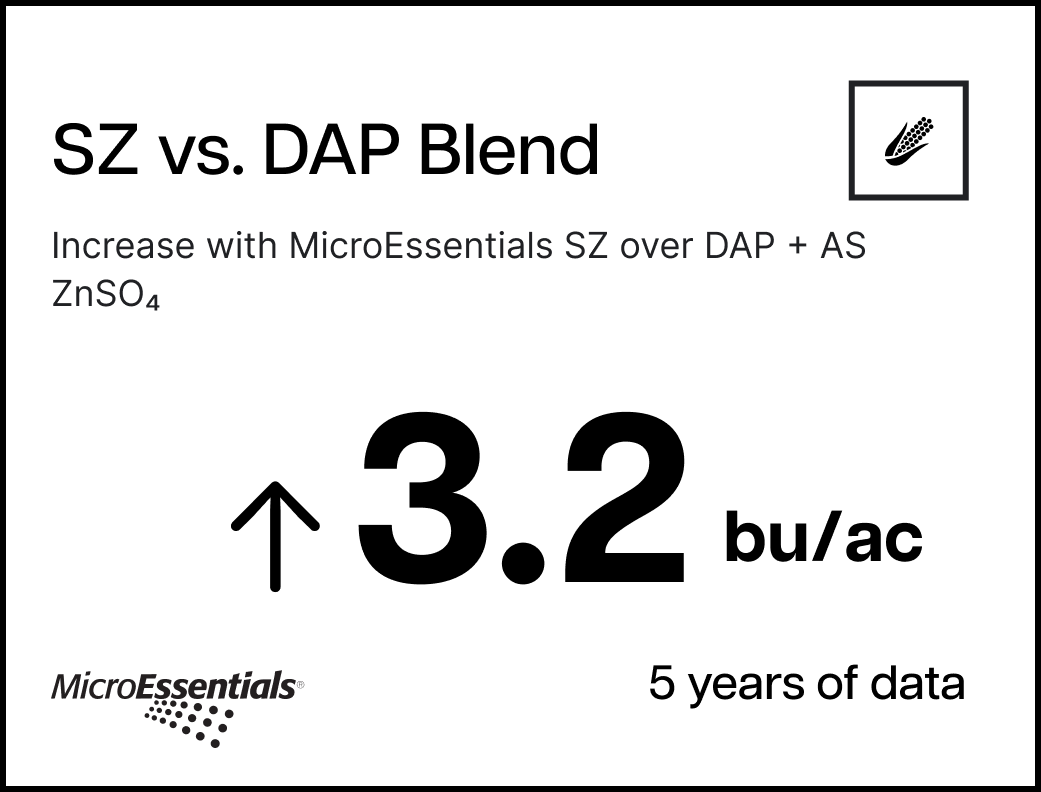
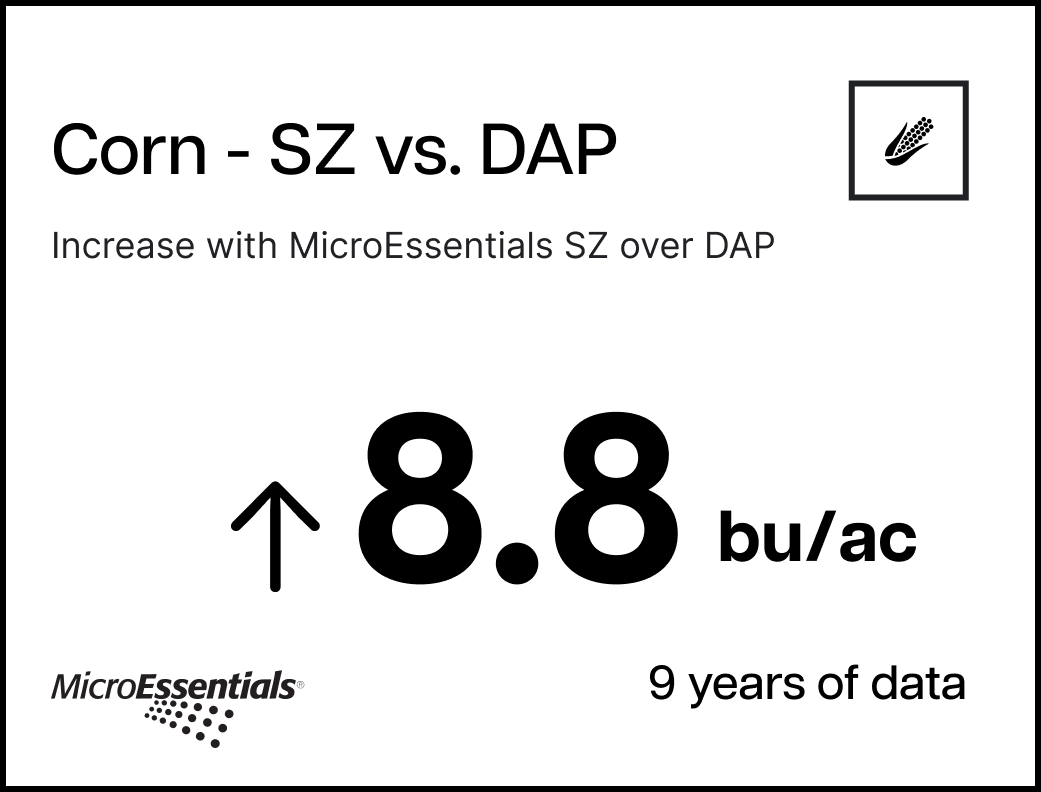
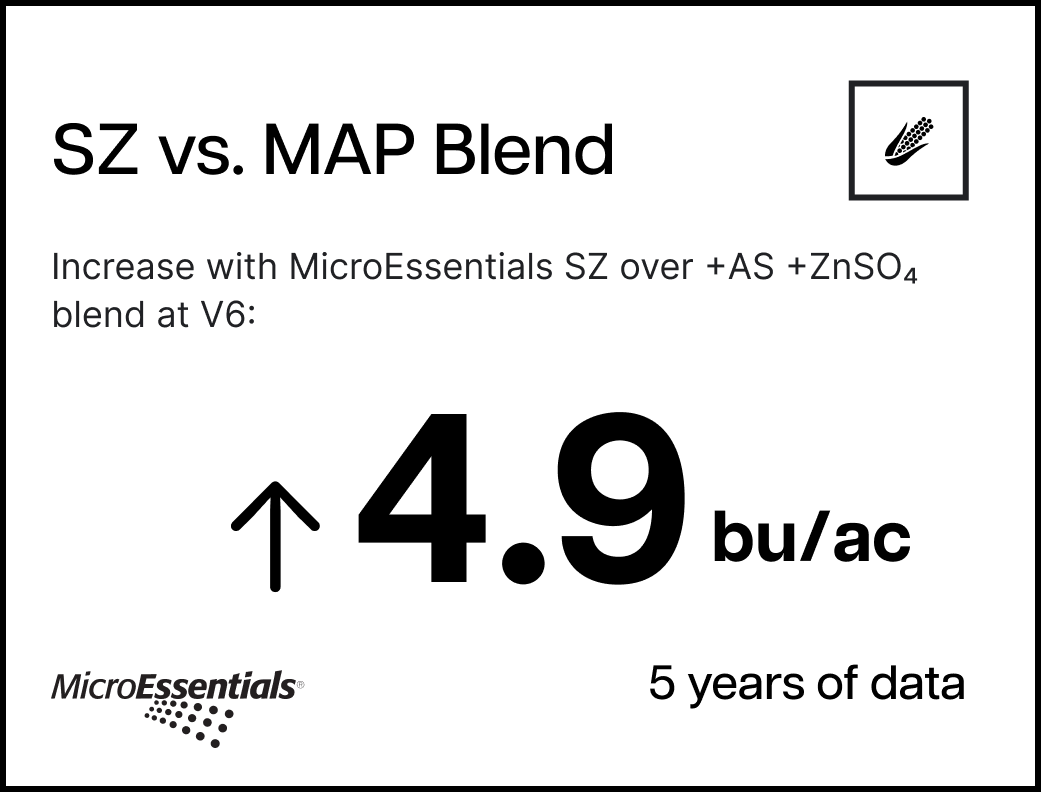

Fusion® Technology makes the difference
MicroEssentials’ differentiator, Purucker notes, is that each granule is packed full of nutrients via Mosaic’s unique Fusion® Technology, and that, unlike with other blends, each MicroEssentials granule contains both elemental sulfur and sulfate sulfur. “Elemental sulfur is not a form of sulfur that a plant can take up,” he explains; “it has to go through a chemical conversion in order to be available for plant uptake. This chemical conversion, as a result, releases a little bit of acidity, and this acidity keeps phosphorus in a more available form and longer into the growing season, which is what gives plants the ability to increase nutrient uptake. That microzone of acidity, you would not get with a MAP or DAP blend, even one that would include elemental sulfur.”
The new studies help to quantify the benefits of those microzones of acidity, and drive home the yield-maximizing potential of a careful fertility plan. Purucker advises that “if soils aren’t prepared with balanced crop nutrition right from the very beginning, then yield isn’t maximized. If you’re not prepared for this crop sprint, so to speak, you can never make up that lost yield potential.”